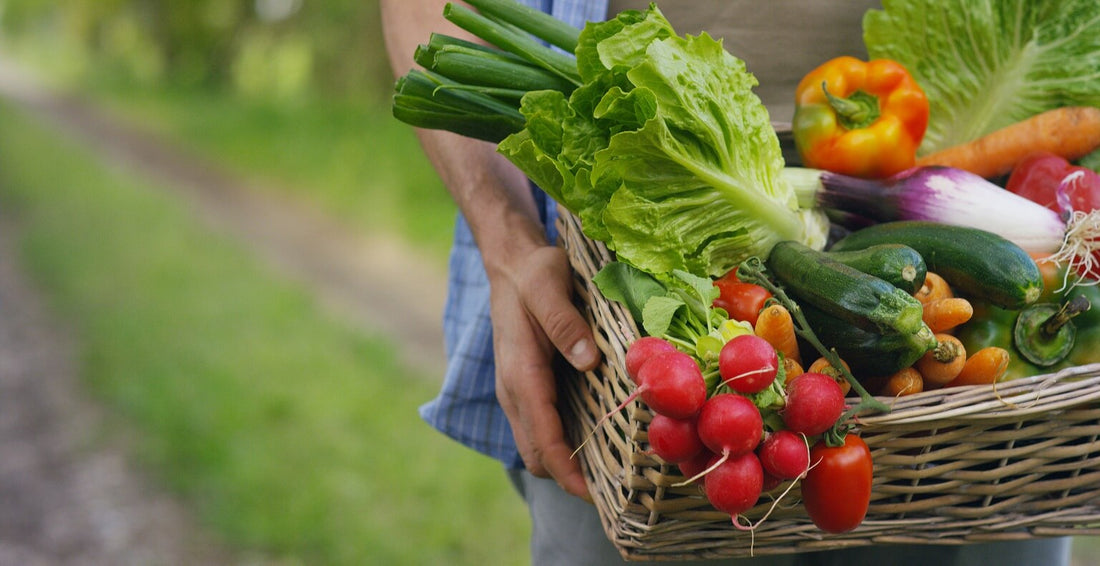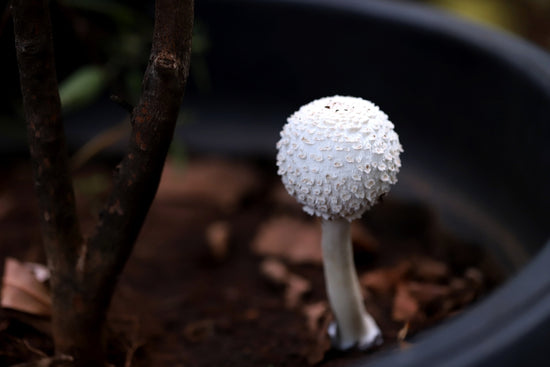
Here are some questions you need to ask yourself before you start your kitchen garden.
- What direction does your growing space face – east, west, north, or south? How many hours of sun does it get?
- What are the vegetables you love to eat with your family? How many plants of each type would you like to have?
- Do you wish to grow any climbing plants? If yes, what will be its support structure and trellis?
Choosing the crops according to season:
The summer vegetables would include the following:
- Beans such as cluster beans, cowpeas and Lablab beans
- Cucurbits such as cucumber, gourds, pumpkin and squashes.
- Leafy vegetables such as Amaranth (Chawli), Malabar Spinach & Palak.
- Okra, pungent chillies, maize, tapioca, sweet potato.
- Musk melon & watermelon.
All season herbs in kitchen garden:
A kitchen garden is incomplete if it doesn’t have a clump of lemon grass used for tea in cold climate, a plant of curry leaf to add unique flavor to the dishes and a Tulsi plant. Tulsi is not merely for worship, but also for medicinal use. The juice and decoction of its leaves are used to cure the cough and sore throat. You may want to read about how to grow Tulsi plant.

Perennial vegetables for kitchen garden:
Asparagus, Colocasia, Potato, sweet potato, pointed gourd, and tapioca are grown from tubers/rhizomes/stem cuttings. Plant of drumstick (Moringa) is also an essential part of Indian plains and is of frequent use.
Read more about growing moringa plant.

Home garden layout:
We have attempted a yard garden design for a garden of 120 mt sq. (1,200 sq. ft.) the area which may be divided as follows:
- Lawn and hedges: 300 sq. ft.
- Perennial flowering shrubs: 150 Sq ft.
- Seasonal flower beds: 100 Sq. ft.
- Paths & Patios: 150 Sq. ft.
- Vegetable Garden: 200 Sq. ft.
- Fruiting plants: 300 Sq. ft.

Creating a layout for your kitchen garden.
Plan out the layout of your kitchen garden as per the direction of sunlight on your patch of space, support your plants would require, the size of plants, and the walking space you would need in between vegetable patches.
Types of Layout
Some of the most common garden layouts are:
-
Rows: One of the most common kitchen garden layout consists of straight rows with walking space in between. Rows running north-south ensure proper full-day of sun exposure and proper ventilation. It is important to grow taller vegetable plants in the north so that they don’t shade the smaller plants.

-
Squares: Another preferred layout of kitchen garden is in squares. Arrange your soil beds or containers in squares and group together vegetables that have similar nutrient requirements. This kitchen garden layout is great if you grow seasonal crops and rotate them.

-
Vertical: Vertical gardening is one of the best ways to maximise precious square footage for your kitchen garden. Use shelves or planter stands to grow vegetables one above the other in levels. You can also use hanging baskets for some of the vegetables and trellises for climbing vines.

How Large Should It Be?
Start small. Unless you have your heart set on growing grains, start with a manageable sized garden. A garden that's 12 x 20 should give you plenty of variety and easy to manage. If you are very new to growing your own veggies, start with few varieties and build with time. Vegetables won’t wait for when it’s convenient for you to get to them.
Another important thing to consider is the structural integrity of your terrace or balcony. Wet soil is much heavier than we can conceive. Using a light growing medium and grow bags instead of heavy ceramic and terracotta pots will further reduce the load.
Area distribution chart for kitchen garden:
The kitchen garden of 50 sq. mt (500 sq. ft.) the area comprising of fruits and vegetables may be further divided as follows:

The vegetable plots mentioned in above table are according to the summer season. The same plots can be utilized for a different group of plants in monsoon and winter.
Making soil beds or setting up containers
Whether you are planning to grow your veggies in soil beds or in containers, you need to ensure that the plants have enough space and ventilation. In case you are using a container, it is better to keep them elevated from the floor for better drainage or elevation. You can use bricks, wooden rafters, or metal stands for this. In case you are creating soil beds on your terrace, keep in mind to take proper waterproofing measures.

While laying out the containers, position the climbers near wall, taller fruiting, and vegetable plants near the back to break wind and protect the smaller plants in the centre of the patch. Always give yourself space to walk and good ventilation for the plant. Cramped up spaces also cause plant problems.

Soil mix for growing vegetables
The soil requirements for fruiting plants are very different from that of ornamental plants. They need more nutrition and support than ornamental plants, while being well-draining and light. A good mix for the same would be equal parts garden soil, good quality organic compost, and coarse sand or perlite is a good idea. Mixing the garden soil with good quality cocopeat is also a good idea for water retention, especially in areas with harsh sun. One of the best and ready to use soil mixes is Gardenia Veggie Mix.
You can further enhance it with Vermicompost or Cow manure.
Irrigation system
Watering the plants right is very important, whether you set up an automated watering system or use a garden hose it’s very important to water right. Overwatering is as big a problem as underwatering. While watering take care to not dislodge the topsoil or uproot the plant. Some plants also don’t like to be watered from the top, water directly to the roots. Try and water the plants early morning and in hot summer months when the plants are droopy water them again in the evening.

Planting Saplings
Start germinating your seeds indoors in seedling trays for a higher chance at successful germination. It is easier to control the environment when using seedling pots. In general, the seedlings are transplanted to the final containers and raised soil beds after 2 to 3 weeks or when the saplings gave at least a couple of pairs of true leaves. While transplanting, take care to not damage the root ball and the planting should be well-spaced. Our seeds have the exact measurements for spacing them, like in the case of lettuce or cabbage they need to be well-spaced for the head to grow to its full size. It’s also important to space them well so that the root systems do not super impose and get their own supply of nutrients. Well-spaced vegetables are also easier to harvest and have lesser chances of infestations.

Pest Control
Fruiting or vegetable plants are more prone to pest infestation than ornamental plants for obvious reasons. So, if you want your harvest to reach its full potential, it is important to carry out preventive pest control measures. Use neem-oil solution every 2 weeks and spray your plants generously either early morning or late evening. Especially, on the underside of the leaves and newly formed fruits.
Tips
The following are some tips to help you with your kitchen garden:
- Keep the plants well-spaced for good ventilation. It also helps avoid the spread of pests from one plant to another.
- Location is key, most vegetables do well in full sun. At least 4-5 hours of direct sun.
- Always use a shower arrangement to water your plants so that sharp jets of water don’t damage the root system of the plants. Avoid wetting the foliage, it promotes infections.
- Don’t over fertilize, especially with excess of Nitrogen fertilisers. They promote foliage at the expense of harvest.
- It’s always better to start small and grow with experience.
- Plant flowers in your garden, bee and butterfly attractors, in your kitchen garden. The pollinators they attract help in cross pollination of your vegetable plants.
FAQs
-
How to start your own kitchen garden from scratch?
It is important to map out your growing space with respect to sunlight availability and air flow and then decide on the vegetables you want to grow. You can either grow in containers or soil beds, in ground or raised beds, and use an extremely rich but well-draining potting mix. Don’t overcrowd your plants and practice preventive pest control.
-
How to grow vegetables in a vegetable garden?
Use good quality seeds and germinate the seeds indoors in a light well-draining medium in either a seedling tray or small pots to control the media. Transplant the saplings to the final growing pot once they are well established and water regularly to keep the soil moist but not soggy and fertilise regularly. Provide proper support in the form of stakes or trellises in time.
-
What month do you plant vegetables?
Cool or winter season vegetables grow best in early spring or after the summer season. While warm season vegetables grow best in late spring and summer. The idea is that cool season vegetables must mature and harvest when the temperatures are cool and warm days for summer vegetables, otherwise they will start seeding. Keep in mind to start your seeds indoors at least 4-5 weeks before they need to be planted out.
-
What are some of the easiest vegetables to grow in a kitchen garden?
Some of the easiest vegetables to grow are peas, radishes, cucumbers, tomatoes, spinach, beetroot, fenugreek, and so on.
-
What vegetables can grow in partially shaded areas?
Root vegetables like beetroots, radishes, potatoes, and leafy vegetables are great for growing in partial shade but they would still need at least half a day of sun.
Happy Gardening!!
Lets Ugaoo!












